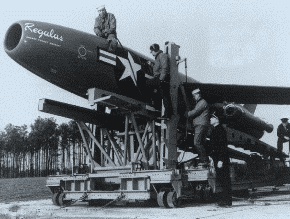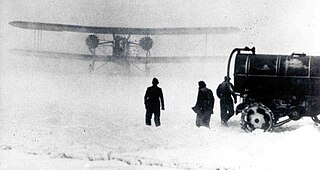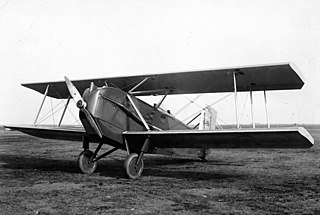
The United States Post Office Department was the predecessor of the United States Postal Service, established in 1792. From 1872 to 1971, it was officially in the form of a Cabinet department. It was headed by the postmaster general.

Postal service in the United States began with the delivery of stampless letters whose cost was borne by the receiving person, later encompassed pre-paid letters carried by private mail carriers and provisional post offices, and culminated in a system of universal prepayment that required all letters to bear nationally issued adhesive postage stamps.

Postal history is the study of postal systems and how they operate and, or, the study of the use of postage stamps and covers and associated postal artifacts illustrating historical episodes in the development of postal systems. The term is attributed to Robson Lowe, a professional philatelist, stamp dealer and stamp auctioneer, who made the first organised study of the subject in the 1930s and described philatelists as "students of science", but postal historians as "students of humanity". More precisely, philatelists describe postal history as the study of rates, routes, markings, and means.

Airmail is a mail transport service branded and sold on the basis of at least one leg of its journey being by air. Airmail items typically arrive more quickly than surface mail, and usually cost more to send. Airmail may be the only option for sending mail to some destinations, such as overseas, if the mail cannot wait the time it would take to arrive by ship, sometimes weeks. The Universal Postal Union adopted comprehensive rules for airmail at its 1929 Postal Union Congress in London. Since the official language of the Universal Postal Union is French, airmail items worldwide are often marked Par avion, literally: "by airplane".

An airmail stamp is a postage stamp intended to pay either an airmail fee that is charged in addition to the surface rate, or the full airmail rate, for an item of mail to be transported by air.

Aerophilately is the branch of philately that specializes in the study of airmail. Philatelists have observed the development of mail transport by air from its beginning, and all aspects of airmail service have been extensively studied and documented by specialists.

A philatelic cover is an envelope prepared with a stamp(s) and address and sent through the mail delivery system for the purpose of creating a collectible item. Stamp collectors began to send mail to each other and to themselves early on, and philatelic mail is known from the late 19th century onward. While some collectors specialize in philatelic covers, especially first day covers and cacheted covers, others regard them as contrived objects that are not reflective of real-world usage, and often will pay a higher price for a cover that represents genuine commercial use. However, mail sent by stamp collectors is no less a genuine article of postage than is mail sent with no concern of seeing the mailed item again. Philatelic covers include mail from first airmail flight and first day of stamp issues ceremonies. Over the years there have been numerous Expositions where special postmarks are made and where a post office is set up where mail can be sent from on the given date of the Expo'. Like any other genuine item of mail these covers include postage stamps and postmarks of the time period and were processed and delivered by an official postal system. Often a philatelic cover will have more historical significance than randomly mailed covers as philatelic covers are also often mailed from the location on the date of an important or noteworthy event, like an inauguration or a space launch.

Varney Air Lines was an American airline company that started service on April 6, 1926, as an airmail carrier. Formed by Walter Varney, the airline was based in Boise, Idaho, United States. The airline is one of the predecessors of United Airlines.

Rocket mail is the delivery of mail by rocket or missile. The rocket lands by deploying an internal parachute upon arrival. It has been attempted by various organizations in many countries, with varying levels of success. It has never become widely seen as being a viable option for delivering mail, due to the cost of the schemes and numerous failures.

The system for mail delivery in the United States has developed with the nation. Rates were based on the distance between sender and receiver in the nation's early years. In the middle of the 19th century, rates stabilized at one price regardless of distance. Rates were relatively unchanged until 1968 when the price was increased every few years by a small amount. Comparing the increases with a price index, the cost of a first-class stamp has been steady. The seal of the Post Office Department showed a man on a running horse, even as railroads and, later, motorized trucks and airplanes moved mail. In 1971, the Post Office became the United States Postal Service, with rates set by the Postal Regulatory Commission, with some oversight by Congress. Air mail became standard in 1975. In the 21st century, prices were segmented to match the sorting machinery used; non-standard letters required slightly higher postage.

The Air Mail scandal, also known as the Air Mail fiasco, is the name that the American press gave to the political scandal resulting from a 1934 congressional investigation of the awarding of contracts to certain airlines to carry airmail and the subsequent disastrous use of the U.S. Army Air Corps to fly the mail after the contracts were revoked.
National Air Transport was a large United States airline; in 1930 it was bought by Boeing. The Air Mail Act of 1934 prohibited airlines and manufacturers from being under the same corporate umbrella, so Boeing split into three smaller companies, one of which is United Airlines, which included what had been National Air Transport.

The Curtiss Carrier Pigeon was an American mail plane of the 1920s. A single-engined biplane designed and built to replace World War I surplus aircraft such as the DH-4, the Carrier Pigeon was one of the first aircraft designed specifically for U.S. Airmail service.

The 1930 Graf Zeppelin stamps were a set of three airmail postage stamps, each depicting the image of the Graf Zeppelin, issued by the United States Post Office Department in 1930, exclusively for delivery of mail carried aboard that airship. Although the stamps were valid for postage on mail sent on the Zeppelin Pan American flight from Germany to the United States, via Brazil, the set was marketed to collectors and was largely intended to promote the route. 93.5% of the revenue generated by the sale of these stamps went to the Zeppelin Airship Works in Germany. The Graf Zeppelin stamps were issued as a gesture of goodwill toward Germany. The three stamps were used briefly and then withdrawn from sale. The remainder of the stock was destroyed by the Post Office Department. Due to the high cost of the stamps during the Great Depression, most collectors and the general public could not afford them. Consequently, only about 227,000 of the stamps were sold, just 7% of the total printed, making them relatively scarce and prized by collectors.

James Herbert "Jack" Knight was an American pilot who made the first overnight transcontinental air mail delivery. Knight was part of an airmail relay team that flew 2,629 miles across the United States on February 22–23, 1921 in an effort to show that the airmail service was much faster than the railroads. When all the other pilots were weathered-in or broken-down, Knight flew extra relay sections through the night in snow and fog and is credited with saving the airmail service from political decommission. "Jack Knight's Night Flight" made him the most famous pilot in America in the era prior to Charles Lindbergh.

Otto Praeger was the Washington, D.C., postmaster from 1913 to 1915 and was the Second Assistant United States Postmaster General from 1915 to 1921. He was responsible for implementing airmail from 1918 to 1927.

In aerophilately, a branch of philately, a first flight cover, also known by the acronym FFC, is mail that has been carried on an inaugural flight of an airline, route, or aircraft, normally postmarked with the date of the flight often of the arrival destination proving it was actually carried on the aircraft and may have a special flight cachet and/or an arrival postmark. Because many first flight covers are essentially made as collectables they can be considered philatelic mail though others consider them to be postal history.
Clifford Ball was an American farmer, soldier, bookkeeper, clerk, automobile dealer, airplane dealer, airline owner, airline operator, airline executive, radio manufacturer, Civil Air Patrol officer and chaplain, and aviation pioneer.

The Air Mail Act of 1925, also known as the Kelly Act, was a key piece of legislation that intended to free the airmail from total control by the Post Office Department. In short, it allowed the Postmaster General to contract private companies to carry mail. The Act was sponsored by Pennsylvania representative Clyde Kelly, and became legislation in February that year.



































